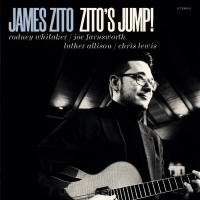Home » Jazz Musicians » Otis Rush
Otis Rush
While critics and fans have long appreciated Otis Rush's role in the founding of West Side Chicago blues, fame has eluded the bluesman for most of his career. "If there were any justice," wrote Bill Dahl in the San Francisco Chronicle, "guitarist Otis Rush would occupy the same exalted position ... as his longtime friend Buddy Guy." Rush first came to the public's attention when Cobra Records released "I Can't Quit You Baby" in 1956, introducing the minor key song with jazz flavorings onto the blues scene. But although Rush's musical career has been plagued with bad luck and record deals gone sour, he continues undaunted. Born in Philadelphia, Mississippi, in 1934, Rush was one of seven children born to O.C. Rush and his wife, Julia (Boyd) Rush. He sang in the church choir and listened to the blues of Tommy McClennan and Lightnin' Hopkins. Drawn to music, he learned the guitar from his two older brothers and by listening to records, and he also played the harmonica. By 1948 Rush left Mississippi for Chicago, where he lived with his sister, attending Dunbar High School half-days and worked a variety of jobs over the next several years in Chicago's steel mills and stockyards. Rush studied the guitar more closely after seeing Muddy Waters and Jimmie Rogers perform at local nightclubs in 1954. He bought a "cheap amp, cheap guitar ... It seemed like it was dancing--when I hit a note on the guitar, the amp would bounce around." He played his first club date with Bob Jones at the Alibi and began playing full-time in 1955 at the 708 Club. At first he imitated the Muddy Waters sound, but this changed as he came under the influence of T-Bone Walker and B.B. King. Soon Rush fronted his own band under the name of Little Otis. In 1956 Willie Dixon saw Rush perform and signed him to Eli Tascano's fledgling Cobra Records. Dixon wrote "I Can't Quit You Baby" and Rush recorded it for his first Cobra session, when the song was released as the label's first single, it reached number six on Billboard's R & B chart, helping to define the West Side Chicago sound. Robert Palmer wrote of the song in Deep Blues: "It was a medium-slow, steady-rocking shuffle, with Otis shouting the gospel blues and playing rapid-fire bursts of high-note guitar." Unlike Waters or Rogers, Rush often added saxophones to his ensemble and incorporated jazz influences.
Read moreTags
Otis Rush: The Essential Otis Rush: Classic Cobra Recordings 1956-1958

by Ed Kopp
Aerosmith, Led Zeppelin, the J. Geils Band, Fleetwood Mac, Eric Clapton, Stevie Ray Vaughan -- these are just some of the popular artists who have covered Otis Rush 's songs. Yet Rush himself is barely known outside the blues world, even after garnering a Grammy for his 1998 album Any Place I'm Going. As The Essential Otis Rush makes abundantly clear, the unsung Mr. Rush is one of finest singers and baddest guitar players in blues history. If you don't ...
Continue ReadingOtis Rush, "Live in Europe" (1993)

Source:
Something Else!
By Nick Deriso Otis Rush is the star-crossed guitar god, always in the right place at the wrong time. Close but no rock star. That despite his role as a principal architect of the modern Chicago blues-guitar vernacular, and a memorably emotional style of singing that echoes some of the genre's most recognizable figures. He's in his prime on “Live in Europe." Though a terrific concert of Rush's has more recently been issued, 2006's “Live and In Concert from San ...
read more



































